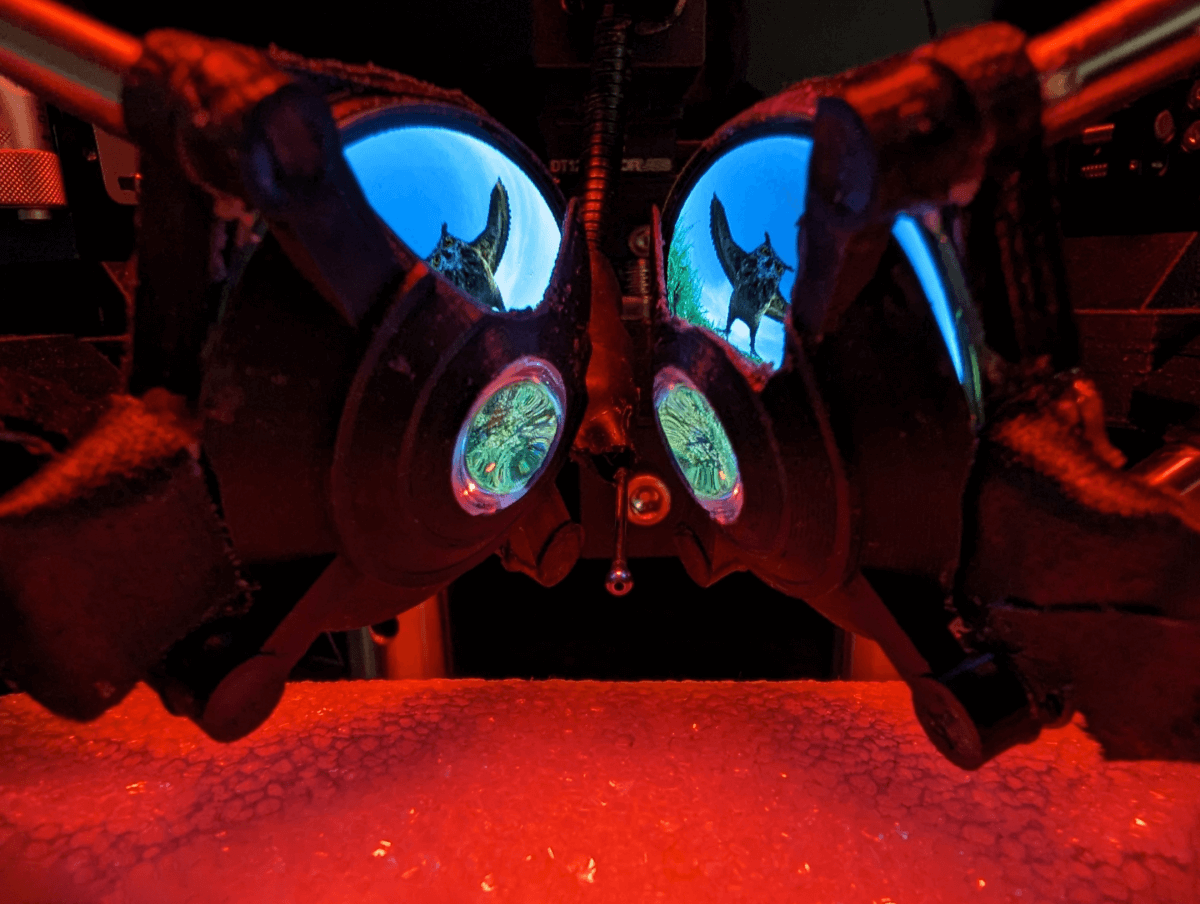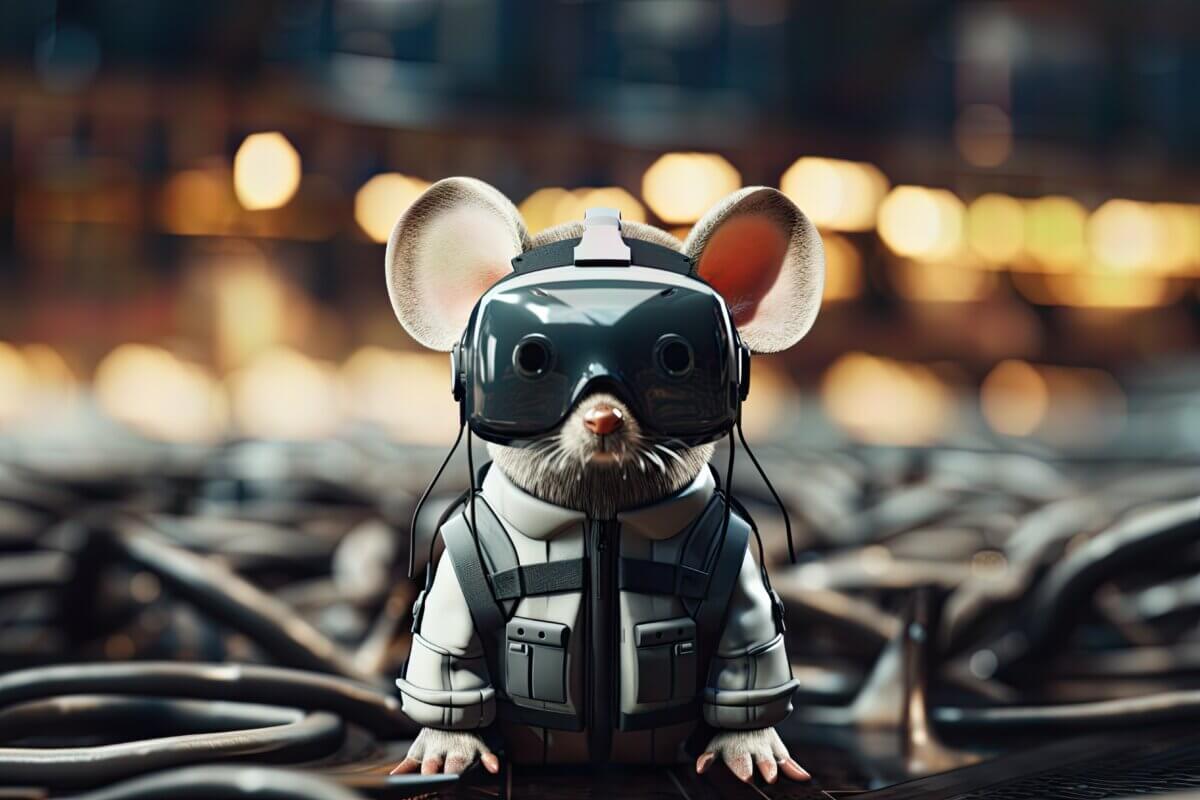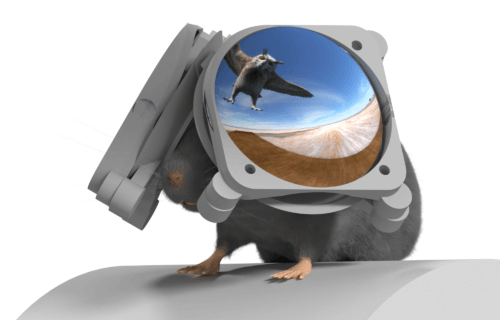EVANSTON, Ill. — Scientists claim that new miniature virtual reality goggles designed for mice could revolutionize our understanding of the brain. These goggles offer more than just an adorable sight; they provide a more effective and cost-efficient immersive experience for mice in lab environments. Unlike the current state-of-the-art systems, which only surround mice with computer or projection screens, these new goggles represent a significant technological advancement.
The goggles excel in simulating natural environments more realistically, enabling researchers to study brain functions related to behavior with greater accuracy and precision. In existing systems, mice often glimpse the laboratory environment beyond the screens, and the screens’ flat design fails to replicate three-dimensional depth effectively. Moreover, current setups struggle to simulate overhead threats, like predatory birds, due to the difficulty of mounting screens above the mice.
These innovative VR goggles, developed by Northwestern University in Illinois, successfully address these limitations, enhancing the scope and effectiveness of research in laboratory settings.
“For the past 15 years, we have been using VR systems for mice,” says Northwestern’s Daniel Dombeck, the study’s senior author, in a media release.
“So far, labs have been using big computer or projection screens to surround an animal. For humans, this is like watching a TV in your living room. You still see your couch and your walls. There are cues around you, telling you that you aren’t inside the scene. Now think about putting on VR goggles, like Oculus Rift, that take up your full vision. You don’t see anything but the projected scene, and a different scene is projected into each eye to create depth information. That’s been missing for mice.”

Scientists have the option to study mice in natural environments, but obtaining real-time brain activity readings in such settings is challenging. In a virtual reality (VR) lab experiment, a mouse navigates through scenes, like a virtual maze, while walking on a treadmill, with the scenes projected onto surrounding screens.
“VR basically reproduces real environments,” Dombeck explains. “We’ve had a lot of success with this VR system, but it’s possible the animals aren’t as immersed as they would be in a real environment. It takes a lot of training just to get the mice to pay attention to the screens and ignore the lab around them.”
These limitations motivated the team to develop miniature VR goggles, aimed at creating a more realistic experience. They named their invention the Miniature Rodent Stereo Illumination VR (iMRSIV). This device offers each eye a 180-degree field of view, ensuring the mouse is completely immersed and isolated from the external environment.
Unlike VR goggles designed for humans, the iMRSIV system (pronounced “immersive”) does not wrap around the mouse’s head. Instead, the goggles are positioned close to the mouse’s face.
“We designed and built a custom holder for the goggles,” notes John Issa, a postdoctoral fellow in Dombeck’s laboratory and study co-first author. “The whole optical display — the screens and the lenses — go all the way around the mouse.”

Tests of their new system found that not only was it much more accurate than traditional VR systems, but the results were very similar to those in freely moving animals.
“We went through the same kind of training paradigms that we have done in the past, but mice with the goggles learned more quickly,” Dombeck adds. “After the first session, they could already complete the task. They knew where to run and looked to the right places for rewards. We think they actually might not need as much training because they can engage with the environment in a more natural way.”
With these new goggles, scientists can now see through a mouse’s eyes how they react to overhead threats. They projected a dark disk at the top of the mice’s fields of vision to replicate a looming threat. The results, published in the journal Neuron, showed that upon noticing the threat, the mice either ran faster or froze.
“In the future, we’d like to look at situations where the mouse isn’t prey but is the predator,” Issa adds. “We could watch brain activity while it chases a fly, for example. That activity involves a lot of depth perception and estimating distances. Those are things that we can start to capture.”
The team hopes that their goggles will be able to also understand how the human brain adapts and reacts to repeated VR exposure.
Traditional VR systems are pretty complicated,” Dombeck concludes. “They’re expensive, and they’re big. They require a big lab with a lot of space. And, on top of that, if it takes a long time to train a mouse to do a task, that limits how many experiments you can do. We’re still working on improvements, but our goggles are small, relatively cheap and pretty user friendly as well. This could make VR technology more available to other labs.”
You might also be interested in:
- Best VR Headsets: Top 5 Immersive Devices Most Recommended By Tech Experts
- Is our universe one big virtual reality? How to test if we’re really living in a computer simulation
- Virtual reality experiment reveals rats have imaginations just like humans
South West News Service writer Isobel Williams contributed to this report.

